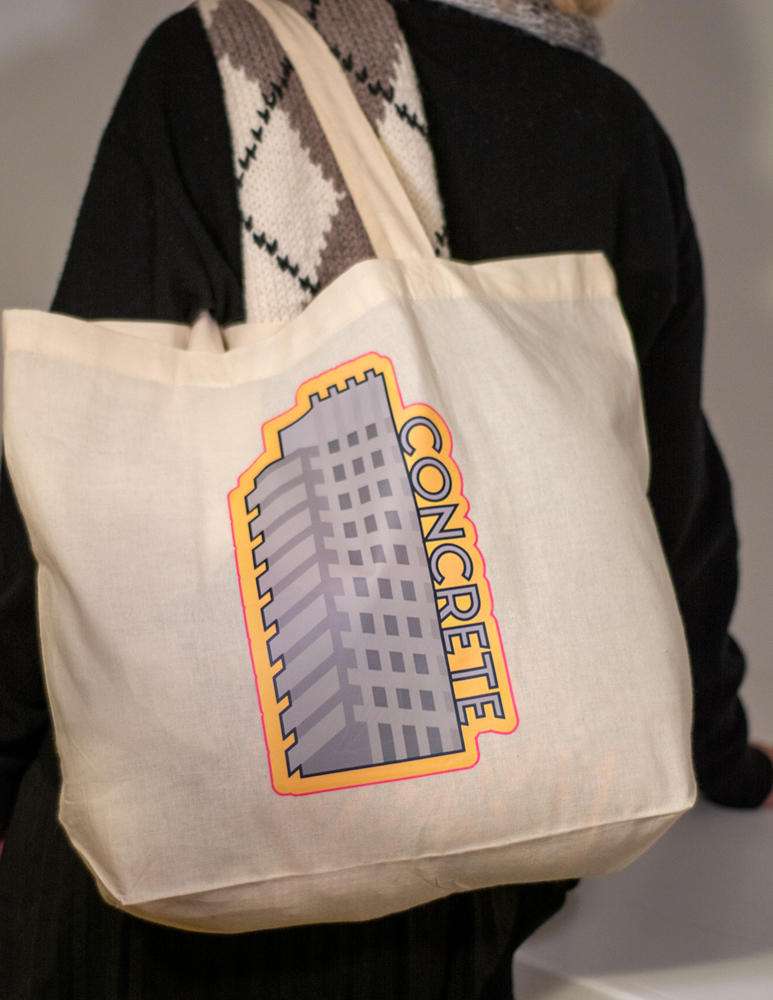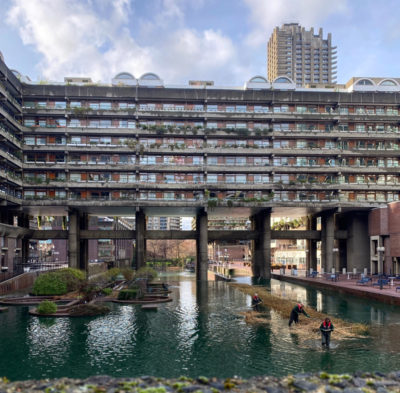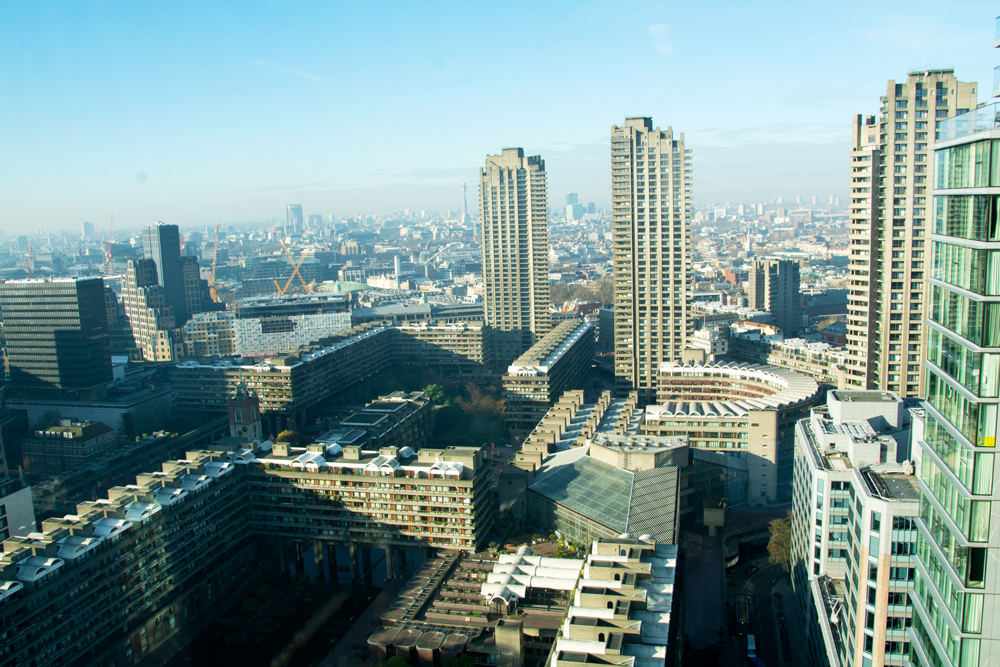Becoming Greyscape
From the small to the massive; barrel-vaulted and high ceilinged apartments, defined in the sales brochures by type, bespoke fittings from the eponymous Barbican sink to the Garchey waste disposal system signify architects Chamberlin, Powell & Bon’s attention to detail as well as and comprehending the raising of concrete apartment blocks weighing tens of thousands of tons on soaring columns, all fastidiously dimpled like a skin by bush hammering.
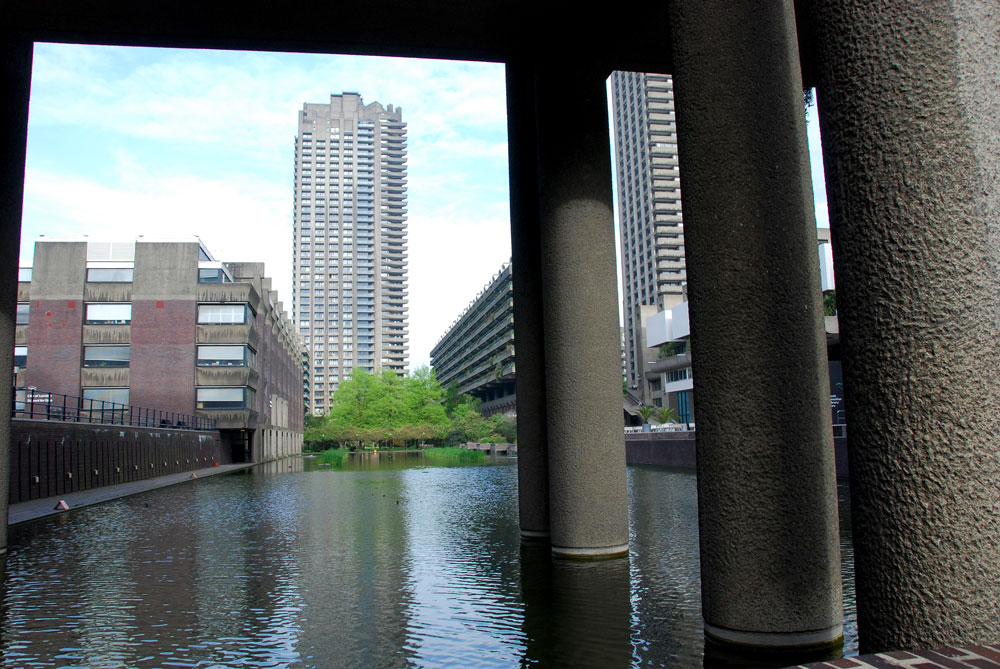
2019
The year that marked the 50th anniversary of residents first moving into the Barbican Estate in the City of London. The venerable Corporation of London, the world’s oldest local authority, conceived in its plans during World War ll and its aftermath to reconstruct the blitzed centre of the historic City of London.
With a nod to its Roman and medieval past, a bold strategy to bring people back to live in the Square Mile whose residential population had declined and declined for decades as the city became home to mighty financial institutions, banks and brokers, insurers and law firms and accountants.
Chamberlin, Powell & Bon
And these worthies of the establishment, of course, they were all male – doubled their boldness by selecting the designs of Chamberlin, Powell & Bon. Those designs were for great blocks of concrete, tower blocks and low-rise apartment blocks and a handful of terraced houses, set in a landscape of water and lawns occupying 40 acres just on the northern fringe of the City. 2000 homes clustered around an arts centre (which grew in size as the Corporation’s ambitions grew to deliver world-class theatre), the essential cars banished to sprawling underground car parks while pedestrians would stroll on high walks.
Misunderstanding Brutalism
These patrons of a Modernist masterpiece then rested from their work and spent the following decades hating what they had done. Of course, that couldn’t be admitted but the Corporation in a very British way was, well, embarrassed. Instead of bruiting their Brut, they just made the best of it they could.
I suppose that’s the point at which we arrived on the scene. We wanted to live right in the middle of London and loved the split-level sitting room and light flooding in. We knew precious little about architecture and, if anything, sort of agreed with the heir to the throne of Great Britain about the modern, finding it carbuncular.
Barbican Magic
It’s wrong to say that an estate so young, compared to much else of Britain’s built environment, can work magic but that’s what the Barbican did for us. So much quieter than we expected, somehow the busy traffic noise hardly penetrates. So bucolic with gardens and a lake and remnants of the ancient city walls alongside the concrete ramparts.
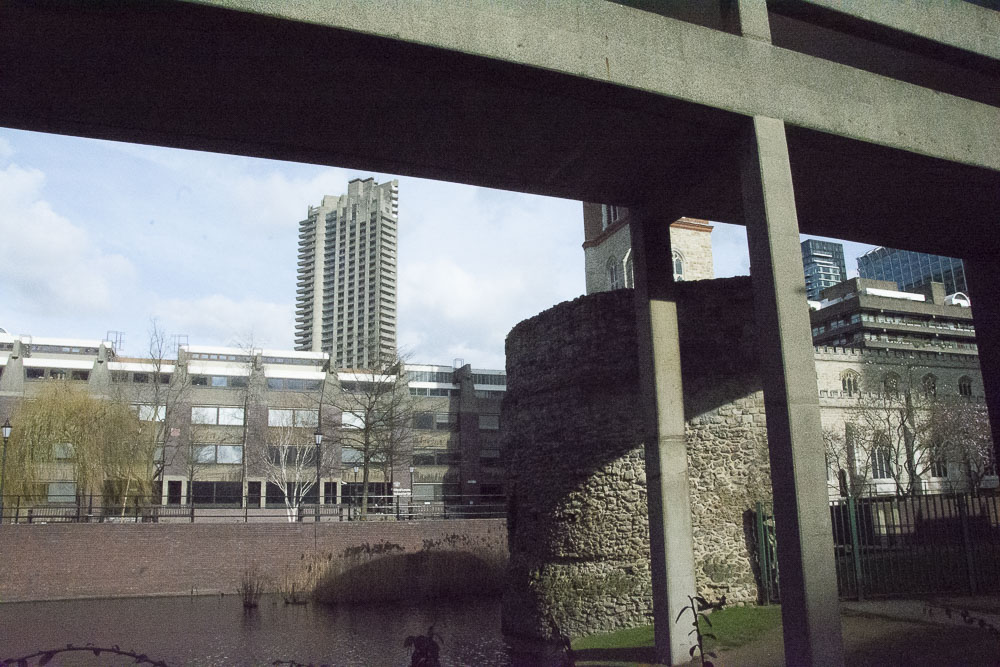
We began to take pleasure in that we liked the place and could find our way around, travelling along the routes and paths, through the gates unlocked with one’s front door latch key, inaccessible to the puzzled visitor trying to follow the obscure yellow lines around the estate.
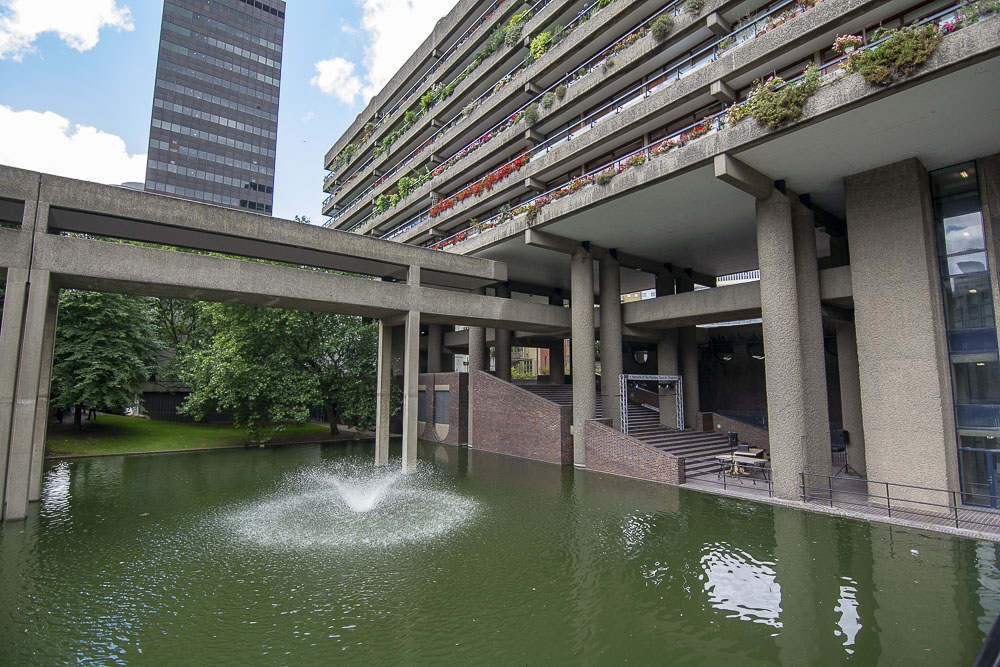
That people we knew had no hesitation to tell us that they couldn’t bear the place and wondered how we could live in a soulless, concrete jungle, actually pleased us. Our knee jerk inner conversation went along the lines of well this is your problem, not ours – can we help it if you can’t see something which is simply brilliant?
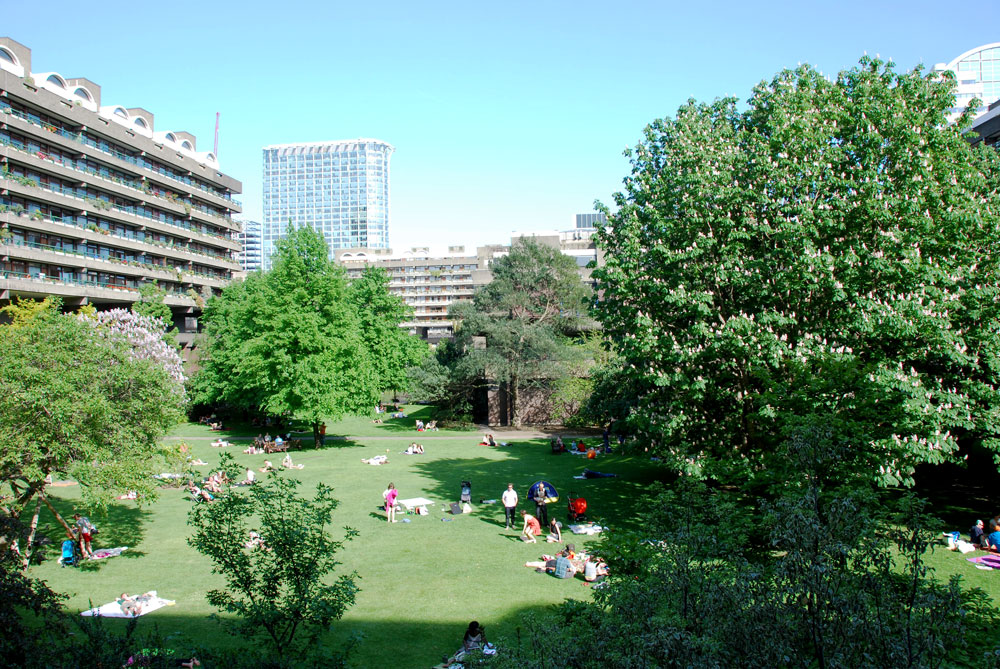
Architectural Tours
We began to notice a change, a softening of language instead of the anti-concrete dialectic. The groups joining the Barbican Centre’s architectural tours seemed to be getting larger and livelier. They were getting it, all those amazing up shots of Lauderdale, the semi-circular sweep of Frobisher Court. And it’s infectious, we decided to post some pictures of the Barbican on Instagram, about which we knew very little. That is how www.Instagram.com/barbican_city_of_london/ started.
The reaction surprised us. We were not alone, there are a lot of people who love poured, unadorned concrete architecture, brutalism, modernism and if we are deep diving, constructivism. Gradually what we posted went beyond the Barbican.
A Developing Conversation
We were learning about the history of buildings, having a developing conversation, we loved understood and sometimes misunderstood. This was taking us further and further afield. As we read and found out the stories of the buildings and their architects, in the context of the last century’s turbulent history, we shared the stories that struck us as interesting and compelling.
Concrete Community
Instagram attracted more and more followers. We were so pleased when we got to 1000 and then 5000. It continued to grow and still does. At the time of writing, @barbican_city_of_london has over 32K followers and they are the Concrete Community because they comment, they tell us stories, explain why they like buildings and send us pictures, amazing photos from their global home towns, to post.
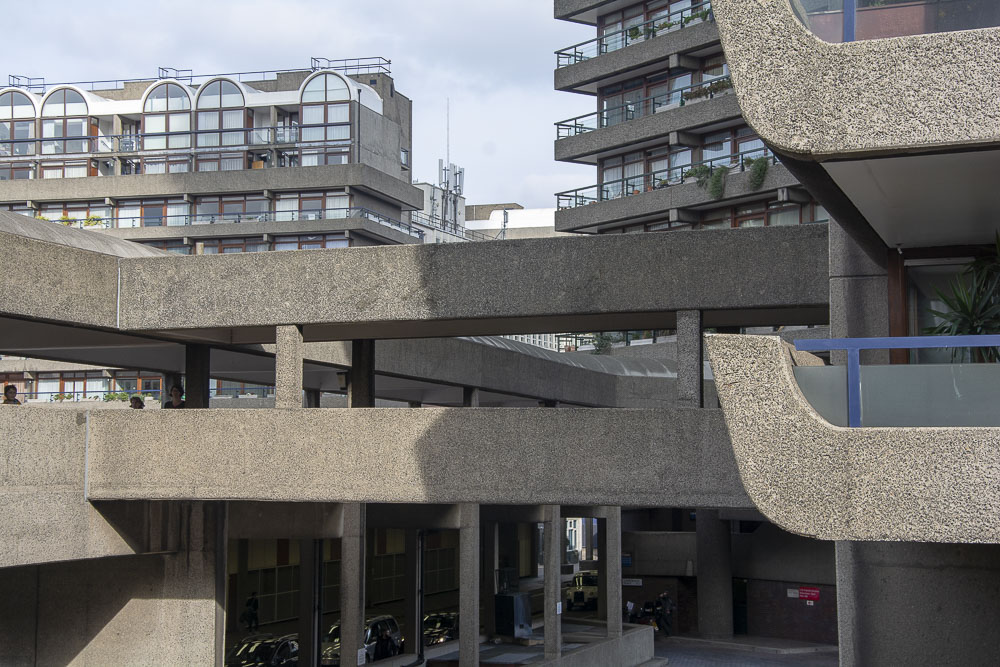
There are people all over the world who love the Barbican. People who adore the work of Le Corbusier and a cohort of other ground-breaking architects and artists who sought to render in solid, usable form buildings to live in, to work in, to be happy in.
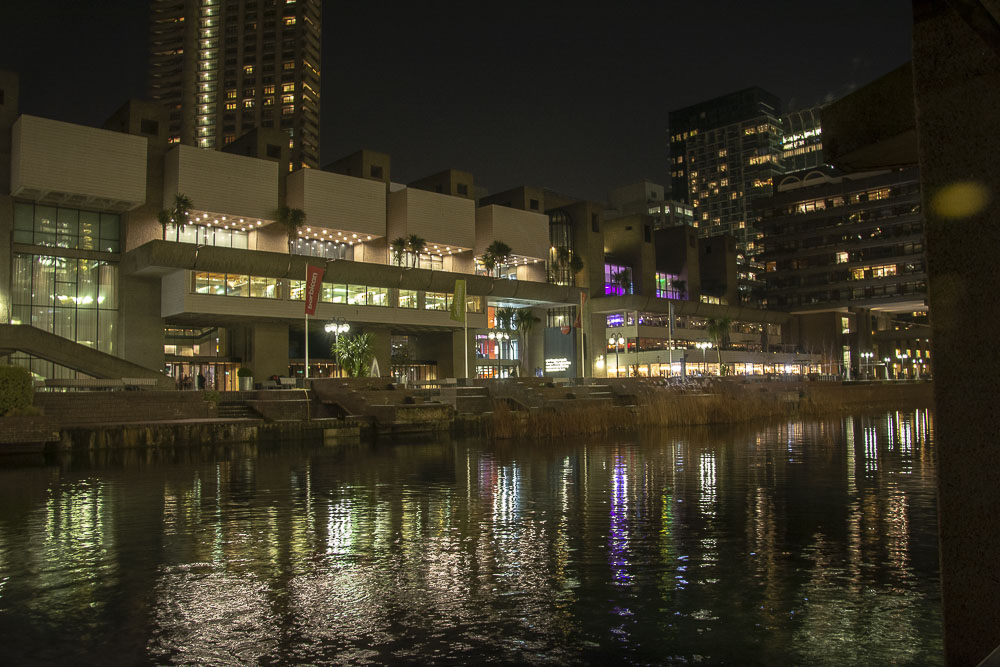
Instagram is a great medium, we aren’t naïve about its dark underbelly but the Concrete Community is polite. Very rarely someone will re-post one of our pictures without first asking and without giving credit. A perfect and somewhat bizarre example involves a Moscow building company. They have re-posted our video of the apartment blocks in Creteil outside central Paris, claiming it as an estate in Moscow.
Next Steps
The next step for us has been to find a way of posting photo essays by us and those sent to us. Hence www.GreyScape.com, which sits alongside the now, two, Instagram sites. We’ve added @greyscapeworld as a second Instagram site. This allows us to feature more modernist and constructivist artefacts as well as buildings and monuments. We are still on a journey. We don’t know so much but we are finding out and we are doing it in good company.
The buildings we love
They are about the future, a future that was conceived by revolutionaries, by groundbreakers. They are all about how people should live in the future.
Many love architecture because of the past. Whether it’s a 14thcentury cottage or a castle, they love the continuity. The sense that generations have lived there before them and more will do so. But our interest lies in the future. How designers want people to live in the modern world. How they want to shape how we live and work and create. And make it better than what has gone before.
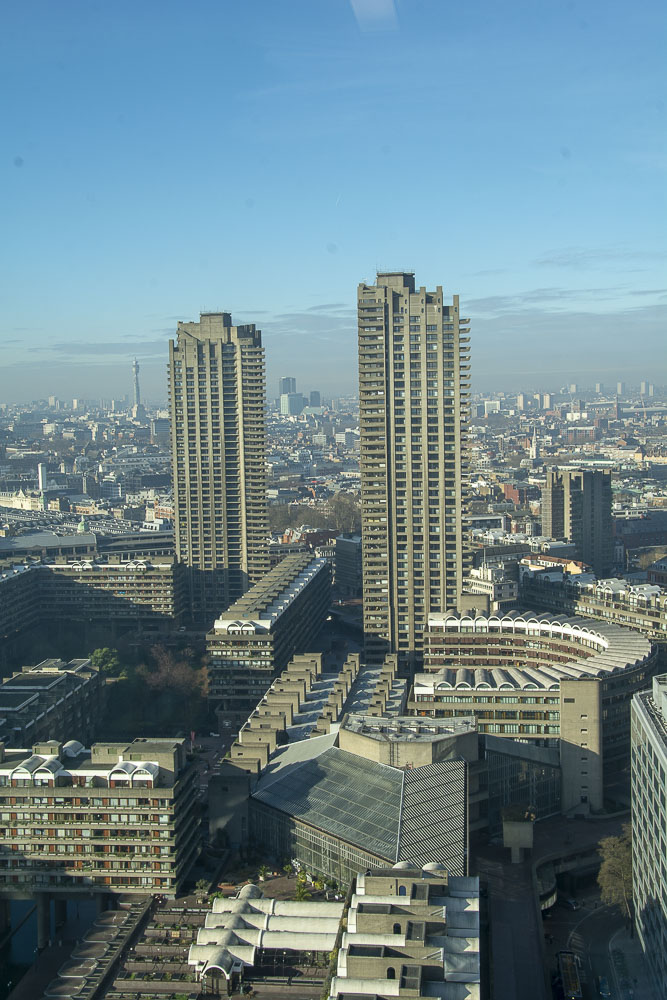
Shop the essentials from Greyscape




